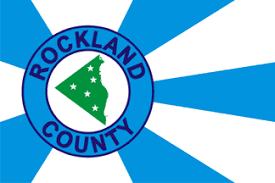Foil: Your right to Know.

To achieve the final boundaries of our proposed map, we used the Dave’s Redistricting online mapping tool, but in this final version we broke down Census Tracts into their component parts of Census Blocks, whenever necessary, to refine and hone the boundaries of specific districts to ensure that all communities of interest received an equitable share of representation, while respecting the vast majority of municipal boundaries at the village and hamlet level.
All districts are functionally contiguous and relatively compact, notwithstanding a of couple odd shapes, necessary to facilitate the union of specific communities of interest.
The total population of all districts fall within the allowed 5% variance, as specified by New York State. The difference in population between our most populous district, and our least populous district, is less than 5% of the mean of all districts. To be specific, the most populous district in our proposed map is District # 5 with 20,413 people, and our least populous districts are # 1 and # 2 both with 19,423 people. That is a difference of 990, which is less than 5% of the mean of all districts, which is 995. This brings our map within full compliance of the New York State redistricting guidelines regarding population totals.
Below is a brief recap of all the districts and the communities of interest and or municipalities they include.
Note: When we mention “small villages” we are referring to incorporated villages with a population of less than 7,967, which as per the latest New York State redistricting guidelines, should only be divided into different legislative districts as a last resort. When we refer to “large villages” we are referring to incorporated villages with a population greater than that number, which can be divided into different districts when necessary. In our proposed map no small villages are divided between different districts.
District # 1 includes the entire Town of Stony Point and the majority of the hamlet of Thiells.
District # 2 includes the entire village of Pomona, the hamlets of Mount Ivy and Garnerville, and parts of unincorporated northern Ramapo and northern Clarkstown. It also includes all of the remainder of the village of West Haverstraw, the majority of which is located in District # 3.
District # 3 includes the entire large village of Haverstraw and the majority of the large village of West Haverstraw, whose combined populations exceed the target threshold and so, by necessity, portions of West Haverstraw have been put into District # 2 to the west.
District # 4 includes the entire small villages of both Wesley Hills and New Hempstead along with incorporated sections of northern Ramapo and the hamlet of Viola.
District # 5 includes the majority of New City.
District # 6 includes the majority of the large hamlet of Monsey and other parts of unincorporated Ramapo.
District # 7 includes the entire small village of Kaser and other parts of unincorporated eastern Ramapo.
District # 8 includes the entire large village of New Square and a portion of the large village of Spring Valley and sections of unincorporated eastern Ramapo.
District # 9 includes the majority of the large Hamlet of Nanuet and the entire hamlet of Bardonia.
District # 10 includes the entirety of the small villages of Nyack, South Nyack, and Upper Nyack, as well as the entire hamlet of West Nyack. It also unites communities of color in that area.
District # 11 includes the entirety of the hamlets of Congers and the vast majority of the hamlet of Valley Cottage.
District #12 includes the entirety of the villages of Sloatsburg, Hillburn, Montebello, and Suffern as well a portion of unincorporated western Ramapo located between the villages of Hillburn and Sloatsburg and encapsulates a community of interest in suburban western Ramapo.
District #13 includes a portion of the large village of Spring Valley and a portion of the hamlet of Hillcrest. It also unites various communities of color that constitute a community of interest in eastern Ramapo.
District #14 includes a portion of the large village of Spring Valley and a portion of the hamlet of Hillcrest. It also unites various communities of color that constitute a community of interest in eastern Ramapo and western Clarkstown.
District # 15 includes the entire large hamlet of Pearl River.
District # 16 includes the entirety of the large village of Chestnut Ridge, and most of Airmont, the combined populations of these two villages is over the target population threshold. Thus, the northern section of Airmont is not within District 16, but put in District 6.
District # 17 includes the entirety of the villages of Piermont and Grandview on Hudson, as well as the entirety of the hamlets of Blauvelt, Orangeburg, Palisades, and Sparkill. It also includes the vast majority of the hamlet of Tappan.
Note: We began by attempting to achieve a 3% variance as proposed by the redistricting consultant, but soon found it was unnecessary and counterproductive to the goals of uniting communities of interests and respecting municipal boundaries.
For instance, Legislative District # 1 is on the low side of the population variance because the entire town of Stony Point combined with the bulk of Thiells comprises a good community of interest as both geographies share mutual concerns. In addition, if you attempt to up the population total of District 1 to achieve a 3% variance, the only way to do that is to add in more of western Haverstraw, which will only serve to infringe upon the integrity of the hamlets of Mount Ivy and Garnerville, and push the boundaries of District #2 farther south and even deeper into Ramapo and Clarkstown. And to what end? The further division of communities of interest and municipal boundaries simply to achieve an arbitrary numerical target, despite the fact that our proposed District 1 is already within the state mandated parameters?
A similar situation is seen in the drawing of Legislative District # 3 which is also just above the lower limit of the population variance. The only way to increase the population total to achieve a 3% variance is to either add in more territory from an already shrinking geography in western Haverstraw and District 2, or to add in some residential neighborhoods from northern Clarkstown, which are separated from the rest of District 3, by the uninhabited, roadless, mass of High Tor Mountain. Clearly, the benefit of keeping residential areas in Garnerville or northern Clarkstown united with neighborhoods in close proximity to them, outweighs any notional advantage of achieving the arbitrary 3% variance, particularly when our proposed District 3 already meets the required New York State standard of a 5% variance.
And again, we face a similar predicament in proposed Legislative District # 4. The combined population of Wesley Hills, New Hempstead and small parts of unincorporated Ramapo add up to a total just above the lower limit of the 5% variance. There is no other available, adjacent territory to add in to increase the population total. However, they comprise a unique community of interest of suburban voters and a significant population of orthodox Jews that deserve a fair share of representation in the legislature. To scuttle our proposed District # 4 simply because it fails to fall within an arbitrary 3% variance, even while it complies with the state mandated 5% variance would be the height of dysfunction.
On the high side, some of our proposed districts are just below the upper limit of the 5% variance. District 5, for instance, is composed primarily of the very large population center of New City, all of which cannot be included within one legislative district. Clearly it makes sense that as much of New City as possible be united within one district. To accommodate that obvious need, the population total of District 5 is pushed up to just under the upper limit of the State mandated 5%, variance. Attempting to adhere to the arbitrary 3% variance would have served no benefit or purpose in the case of Legislative District # 5.
In our discussions regarding the redistricting process, people could care less whether their legislative district was within a 3% or 5% population variance. What the average citizen truly cares about is whether the concerns of themselves, their neighbors and the local community will have a voice in the County Legislature. The best way to achieve that end is to keep communities of interest united without regard to whether or not the district population totals meet a 3% variance.
What follows below is a more detailed explanation of the configuration of our proposed Legislative District # 12.
District # 12 combines the entirety of the villages of Sloatsburg, Hillburn, Suffern, and Montebello, but also includes a portion of unincorporated western Ramapo.
To create the final boundaries of District # 12, we broke down Census Block 3 of Census Tract 116.01 into its individual Census Blocks and then reapportioned those Census Blocks into the proposed Legislative Districts most appropriate for each. Census Block 3 includes all of the unincorporated portions of western Ramapo included in our District # 12.
Census Block 3 in Census Tract 116.01 has a relatively large and sprawling geography, which includes a large uninhabited section of Harriman State Park. It includes some Census Blocks that are adjacent to, and some Census Blocks that are within, the villages of Sloatsburg, Hillburn, Suffern, Montebello, Wesley Hills, and Pomona.
The individual Census Blocks within Census Block 3 have populations that are in close proximity to, and closely associated with the different villages that border and overlap Census Block 3. To create proposed legislative districts that are compact, contiguous, and unite communities of interest, we reapportioned the individual Census Blocks of Census Block 3, so that they would be within the boundaries of the proposed Legislative Districts that they were geographically proximal to, and most closely associated with, in terms of being a community of interest.
The Census Blocks within Census Block 3 of Census Tract 116.01, that are adjacent to, within, or in close proximity to the villages of Sloatsburg, Hillburn, Suffern, and Montebello, should naturally be included in our proposed District # 12, which includes those four villages.
However, Census Blocks 3006, 3007, and 3025, should be included in our proposed Legislative District # 4 because those Census Blocks are immediately adjacent to Wesley Hills which is in our proposed Legislative District # 4.
Census Blocks 3000, 3001, 3002, 3026 and 3055 should be included in our proposed Legislative District # 2, because those Census Blocks are immediately adjacent to and within the village of Pomona, which is included in our proposed Legislative District # 2.
This is appropriate because the population centers in the Census Blocks delineated above have more in common with the populations in the legislative districts, we assigned them to because they are located immediately adjacent to them.
It should also be noted that none of the individual Census Blocks mentioned above, specifically 3006, 3007, 3025, 3001, 3002, 3026 and 3055 are located within the borders of Sloatsburg, Hillburn, Suffern, or Montebello, and will not result in the division of any part of any of these four villages into separate legislative districts.
The district # 12 described herein is within the 5% variance against the 19,918-target number.
Moving the Census Blocks mentioned above into our proposed Legislative Districts # 2 and # 4 will not cause either to be over the allowed variance. Note: When you look at the map of our District #12 it may appear that there is a noncontiguous portion close to its northwestern border with Legislative District # 4. This is in fact a quirk of Census Block 300. The apparent noncontiguous portion is actually Kakiat County Park, which is a fixed section of Census Block 300 and is attached to the remainder of that Census Block by a narrow corridor. However, this is of no real consequence as Kakiat Park is uninhabited.
Michael Parietti





